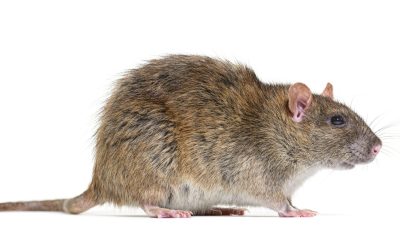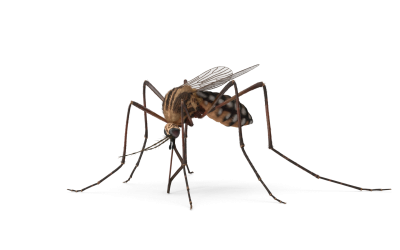This blog will delve into the science behind the bed bug’s resilience and why they are so hard to eliminate.
We will also discuss the psychological impact that bed bug infestations can have on their victims.
Lastly, we will explore innovative approaches to bed bug management and how you can keep your home bed bug-free. So, if you’re tired of being bitten at night or want to learn more about these pesky creatures, read on!
Bed Bugs: A Brief Introduction
Maintaining a clean and hygienic living environment is crucial for keeping bed bugs at bay. These small, blood-sucking insects are notoriously difficult to eliminate once they infest a living space. They can easily hide in cracks and crevices, making it hard to detect their presence until the infestation grows out of control.
Despite their size, bed bugs can cause significant harm to both physical and mental health and incur costly damages. Therefore, it is essential to remain vigilant and take preventive measures to avoid an infestation. Regular cleaning, inspection, and prompt treatment by pest control professionals can help keep bed bugs at bay, ensuring a safe and comfortable living environment.
Physical Characteristics of Bed Bugs
Bed bugs are small, flat, and reddish-brown, with six legs and two antennae. Adult bed bugs are about the size of an apple seed, and their flat bodies allow them to hide in tight spaces like cracks and crevices.
Bed bugs are nocturnal insects that feed on human blood, making them particularly difficult to identify during the day. Their physical characteristics make them incredibly resilient and hard to eradicate once they have infested a space.
How Bed Bugs Infest Homes and Public Spaces
Bed bugs are pervasive pests that can quickly infest homes and public spaces, causing headaches for homeowners and property managers alike. They are masters of hitchhiking, often travelling on luggage or clothing from one location to another.
Once bed bugs have found a suitable hiding spot, they can quickly multiply, making them challenging to eradicate without professional intervention. Unfortunately, bed bugs can be found in many public spaces, including hotels, movie theatres, and public transportation.
As a result, it is crucial to remain vigilant when travelling and regularly inspect secondhand items before bringing them into your home to prevent infestations.
The Psychology of Bed Bugs
Bed bugs are not just a physical problem; they can also affect a person’s emotional well-being. The fear and stigma surrounding bed bugs can lead to significant psychological stress and anxiety for those suffering from an infestation.
Moreover, the reluctance to report or seek help for an infestation only exacerbates the problem, making it even more challenging to eradicate these pests. As such, understanding the psychology of bed bugs is crucial to developing effective control measures that address the physical and psychological aspects of this pervasive problem.
Emotional Toll Infestations Take on Victims
Bed bug infestations can be a traumatic experience for their victims. The physical discomfort from bites often accompanies the anxiety and fear of being bitten again. However, the emotional toll of bed bugs extends beyond just the physical aspect. Victims may feel embarrassed or ashamed, leading to social isolation as they try to keep their infestation a secret. This isolation can further contribute to depression and other mental health issues.
Seeking help from professionals as soon as possible is crucial in mitigating the psychological impact of a bed bug infestation. As difficult as it may be, reaching out for support can help alleviate the emotional burden and lead to a faster resolution of the problem.
Why are Bed Bugs so Resilient?
Bed bugs have evolved to become highly resilient pests that are difficult to eradicate.
One of the main reasons for their resilience is their ability to survive prolonged periods without feeding, making it challenging to starve them out.
Another reason is their rapid reproductive capabilities, with a small infestation quickly turning into a large one.
Additionally, bed bugs have developed resistance to many commonly used pesticides and can hide in small crevices, making complete elimination from an infested area challenging.
These factors make bed bugs a formidable opponent in the ongoing battle against pest control. Integrated pest management techniques and the latest technological advancements in detection and control offer hope for managing these stubborn pests effectively.
Rapid Reproductive Capabilities
Bed bugs are infamous for their rapid reproductive capabilities, with females able to lay up to 500 eggs in their lifetime. This means that even a small infestation can quickly turn into a large one, making it challenging to eradicate them.
Bed bugs can survive for long periods without feeding, which makes starvation methods ineffective against them. In addition, they are known for hiding in small crevices and hard-to-reach places, making it difficult to eliminate them from an infested area.
As a result of these factors, professional pest control services are often necessary to effectively eradicate bed bugs.
Ability to Hide in Crevices
Bed bugs’ ability to hide in crevices is one of the main reasons they are so difficult to eradicate. These tiny insects can squeeze into spaces as narrow as a credit card, making it nearly impossible for homeowners to find and eliminate them.
Even professional exterminators have trouble locating where bed bugs may be hiding. Additionally, bed bugs can survive for long periods without feeding, which allows them to wait out treatment efforts and reemerge once the coast is clear.
Due to their elusive nature, a multi-faceted approach that combines professional extermination services with thorough cleaning and preventative measures is necessary to eradicate a bed bug infestation successfully.
Challenges in Eradicating Bed Bugs
Bed bugs are notoriously difficult to eradicate, and several challenges contribute to this issue. One of the main challenges is their ability to survive without feeding for months, which makes it challenging to starve them out.
Additionally, bed bugs have developed resistance to many common pesticides, making it difficult to eliminate them through traditional methods. Another significant issue is their ability to hide in tiny cracks and crevices, which allows them to evade detection and survive treatment efforts. As infestations can quickly spread, containment is an ongoing challenge.
Ineffectiveness of DIY Treatments
Many attempts to eliminate bed bugs using DIY treatments, such as essential oils or insecticides. However, these methods are often ineffective and can even exacerbate the problem. Bed bugs have developed resistance to many of the chemicals used in traditional pest control, making it difficult to eradicate them with over-the-counter products.
Professional extermination is often necessary for a successful outcome. It is essential to properly prepare before treatment, which includes washing and drying all bedding and clothing on high heat. Additionally, regular monitoring and preventative measures can help prevent future infestations.
Innovative Approaches to Bed Bug Management
As bed bugs continue to resist traditional pest control methods, innovative approaches have emerged as effective alternatives. One such method is heat treatment, which involves raising the affected area’s temperature to a level lethal for bed bugs. This approach is eco-friendly and highly effective in eliminating bed bugs from even the hardest-to-reach places.
Another method gaining popularity is cryonite freezing, which uses CO2 snow to freeze and kills bed bugs instantly. Pheromone traps are another option that can attract and trap bed bugs without harmful chemicals. By embracing more sustainable and targeted approaches like these, bed bug management can become more efficient and less harmful to humans and the environment.
Integrated Pest Management Techniques
Integrated Pest Management (IPM) is a comprehensive approach to bed bug management that combines multiple techniques to eradicate infestations and prevent their recurrence effectively. IPM techniques include monitoring, inspection, sanitation, exclusion, and the use of pesticides. Using a combination of methods, pest control professionals can create a treatment plan tailored to the specific needs of each infestation.
Studies have shown that IPM can be more effective than traditional pesticide treatments in eradicating bed bugs and preventing future infestations. However, successful implementation requires proper training and coordination between homeowners, pest control professionals, and other stakeholders.
New technologies such as heat treatment and insect growth regulators are also being developed to improve bed bug management. With the right combination of strategies and tools, it is possible to successfully manage bed bug infestations and protect your home from these resilient pests.
In conclusion, bed bugs are a resilient and challenging pest to eradicate, and their physical characteristics, rapid reproductive capabilities, and ability to hide make them challenging to control. Moreover, bed bug infestations can take an emotional toll on their victims, adding another layer of complexity to the problem. While DIY treatments may seem affordable, they often prove ineffective in the long run.
Professional extermination services and innovative approaches such as integrated pest management techniques and advanced technological solutions are necessary for adequate control. If you suspect a bed bug infestation in your home or property, don’t hesitate to seek professional help. Stay informed about the latest advancements in bed bug control by reading our blog on innovative approaches to bed bug management.




0 Comments